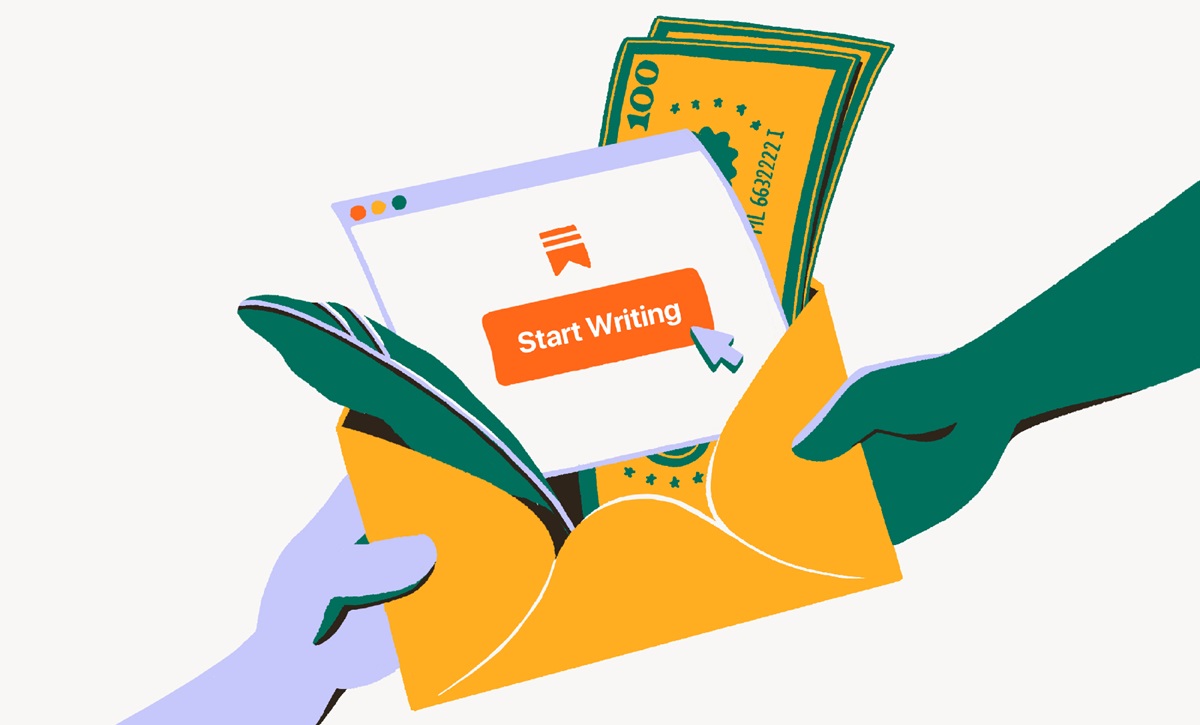What is Substack? A comprehensive guide to modern publishing
 What is Substack? Image © substack.com
What is Substack? Image © substack.com
Substack has become an essential force in the world of digital publishing landscape, reshaping how writers and creators connect wi© substack.com th their audiences. By offering a seamless way to publish newsletters and monetize content, Substack empowers individuals to take control of their creative output.
In this comprehensive guide, we delve into what Substack is, its features, benefits, and how it stands as a beacon for modern publishing.
Introduction to Substack
In an era where content is king, Substack provides a throne for writers to reign supreme. Founded in 2017, Substack is a platform that allows writers to send digital newsletters directly to their subscribers, who can be on free or paid subscriptions. It bridges the gap between traditional blogging and email marketing, offering a hybrid that leverages the strengths of both mediums.
Substack aims to enable writers to make a living doing what they love without the constraints of traditional publications or media gatekeepers. By combining easy-to-use publishing tools with built-in subscription options, Substack democratizes content creation and distribution.
How Substack works: The basics
Understanding how Substack operates is essential for anyone looking to tap into its potential. The platform simplifies the process of creating, distributing, and monetizing content.
Setting up an account
Getting started with Substack is straightforward:
- Sign up: Visit Substack's website and create an account using your email address or social media login.
- Customize your profile: Add a profile picture, bio, and customize your newsletter's name and URL to reflect your brand.
- Set up preferences: Choose your newsletter's theme, layout, and configure settings like posting frequency and subscription options.
Creating and publishing newsletters
Substack's intuitive editor makes content creation a breeze. Here are the basic funtions:
- Draft: Use the rich text editor to write your posts, with options to format text, insert images, embed videos, and include links.
- Preview and Edit: Before publishing, preview your newsletter to ensure it looks perfect across devices.
- Publish or Schedule: Decide whether to send your newsletter immediately or schedule it for a later date and time.
Managing your audience on Substack
Building and nurturing your subscriber base is crucial:
- Subscriber analytics: Access detailed insights on subscriber growth, open rates, and engagement metrics
- Engagement tools: Interact with your audience through comments, polls, and email responses
- Subscriber segmentation: Organize subscribers based on their engagement levels or subscription status (free or paid).
Key features of Substack
Substack stands out due to its robust feature set designed to support both creators and readers.
Subscription options include free newsletters where you can build an audience without charging subscribers; paid subscriptions that let you monetize your content by offering exclusive material to paying subscribers; and founder's subscriptions which allow dedicated fans to support you at a higher price point.
Analytics and metrics tools include a real-time data dashboard to monitor subscriber engagement as it happens; detailed reports to let you analyze trends over time to inform your content strategy; and revenue tracking to keep tabs on your earnings from paid subscriptions.
Integration with other third-party platforms is also possible, such as for social media sharing to easily share your newsletters on platforms like X and Facebook; plus analytics services like Google Analytics; and enhanced functionality integrations such as Zapier.
 Features of Substack. Image © substack.com
Features of Substack. Image © substack.com
Substack's inception was rooted in the desire to empower writers. As time has passed, the founders have continued to recognize the limitations imposed by traditional media outlets and sought to create a platform that offered creative freedom and financial independence. Since its launch, Substack has:
- Attracted high-profile writers: Esteemed journalists and authors have migrated to Substack, drawn by the promise of autonomy and direct audience connection.
- Expanded features: Introduced podcast support, enhanced analytics, and community-building tools.
- Secured funding: Received significant investment to fuel growth and innovation, signaling confidence in its business model.
Benefits of using Substack
Substack offers a myriad of advantages that make it an attractive platform for content creators.
Monetization opportunities
Its direct revenue streams let users earn money directly from subscribers without intermediaries. And flexible pricing models mean you can set your subscription rates and offer discounts or promotions.
Control over content and audience
Substack’s approach to ownership means you retain full rights to your content and subscriber list. And plentiful customization options let you personalize your newsletter's look and feel to align with your brand.
Ease of use
Its highly user-friendly interface means no technical skills are required and even those without dev backgrounds can build and personalise a newsletter. Strong support and resources including access to guides and customer support can help you succeed.
Challenges and limitations of Substack
While Substack is a powerful tool, it's important to be aware of potential drawbacks. These include:
- Saturation risk: As more creators join, standing out in the same niche as your competitors becomes more challenging.
- Platform reliance: Changes in Substack's policies or algorithms can impact your reach and revenue.
- Limited customization: Compared to building your own website, customization options are more constrained.-
- Content strategy and free-vs-premium balance: Deciding what to offer for free versus what to reserve for paying subscribers can be tricky.
Substack for writers
Substack offers wonderful opportunities for writers seeking independence and direct audience engagement. Here is a list of people that could find a home for their writing on Substack:
- Journalists and reporters: Share in-depth analysis and investigative pieces.
- Authors and novelists: Publish serialized fiction or updates on upcoming works.
- Experts and thought leaders: Offer insights and commentary in specialized fields.
No matter who you are and what you write about, there a couple of universal tips for producing a successful newsletter:
- Define your niche: Focus on a specific topic to attract a dedicated audience.
- Consistency is key: Regular publishing builds trust and anticipation.
- Engage Your readers: Encourage feedback and foster a community around your content.
- Quality over quantity: Prioritize delivering valuable, well-researched content.
Substack for readers
For readers, Substack offers a personalized and clutter-free content consumption experience. It's easy to discover new content through:
- Substack Directory: Browse categories and trending newsletters to find content that interests you.
- Recommendations: Receive suggestions based on your subscriptions and reading habits.
- Social proof: See what newsletters your peers or influencers are subscribing to.
Managing your subscriptions is also incredibly simple, thanks to: - Subscription Dashboard: View and organize all your subscriptions in one place. - Notification preferences: Customize how and when you receive new content. - Supporting creators: Opt to become a paid subscriber to support your favorite writers.
Monetizing content on Substack
Earning revenue on Substack involves strategic planning and audience engagement.
 Monetizing content on Substack. Image © substack.com
Monetizing content on Substack. Image © substack.com
You'll need to set up paid subscriptions considering the following: 1. Pricing strategy: Research market rates and consider offering tiered pricing. 2. Exclusive content: Provide value through exclusive articles, Q&A sessions, or behind-the-scenes insights. 3. Free trials and promotions: Encourage potential subscribers with limited-time offers.
Then, it's absolutely crucial to engage (new) subscribers by: 1. Community building: Create a sense of belonging among your subscribers. 2. Personalized communication: Send personalized messages or shout-outs to foster loyalty. 3. Feedback loops: Use surveys or polls to understand subscriber preferences.
Substack alternatives
Exploring alternatives ensures you choose the platform that best fits your needs. Common Substack competitors include:
- Ghost, an open-source platform offering full ownership and customization;
- Patreon, which focuses on membership subscriptions for various types of creators;
- Medium, a blogging platform with a built-in audience but limited monetization control.
To read more about these other options - including our very own Memberful product, check out our article Substack alternatives: 9 platforms for newsletters and online publishing.
Frequently Asked Questions (FAQs) about Substack
What makes Substack unique?
Substack's uniqueness lies in its fusion of blogging and email newsletters, providing a direct line between creators and their audience without intermediaries. This model fosters stronger relationships and offers creators full control over their content and revenue.
Is Substack free to use?
Yes, Substack is free to use for both writers and readers. However, if you offer paid subscriptions, Substack takes a 10% commission on the revenue generated, in addition to standard payment processing fees.
Can you make money on Substack?
Many writers earn substantial income through paid subscriptions. Success depends on the quality of content, audience size, and the value perceived by subscribers.
What are the best practices for Substack newsletters?
Consistency: Regular publishing schedules to keep subscribers engaged; Quality: Provide valuable and original insights in your content; Engagement: Encourage audience interaction through comments and feedback; and Promotion: Leverage social media and word-of-mouth to grow your subscriber base.
How secure is Substack?
Substack prioritizes security and privacy. Data transmission is encrypted, and they adhere to strict privacy policies to protect user information. However, it's always wise to follow best practices like using strong passwords and enabling two-factor authentication.
What are the best alternatives to Substack?
Alternatives include: Ghost for those wanting open-source solutions and full customization; Memberful which is focused on building a membership for your brand or and community; Patreon which is ideal for creators seeking patronage across various content types; and Medium -- suitable for writers looking to tap into an existing audience.
Conclusion: The future of Substack
Substack is already a key player in online publishing but as the digital landscape continues to evolve, the platform (as with all software) will have to adapt to offer new opportunities for creators and readers alike.
With continued growth and innovation, we can expect to see Substack launch enhanced creator tools including improved features for content creation and audience engagement, as well as increased support for international writers and multilingual newsletters.
We should also expect diversification of content with possiblle expansion into podcasts, video content, and multimedia newsletters. There will likely also be more community features such as forums or groups to deepen subscriber interaction.
Subscribe for updates
Stay up to date on Memberful's latest product updates, insights, and teaching centered around growing your community.
Have an audience?
Customers like Mythical (28+ million subscribers) rely on Memberful to power their membership communities.
Get started for free